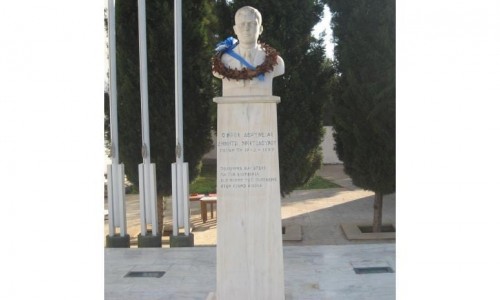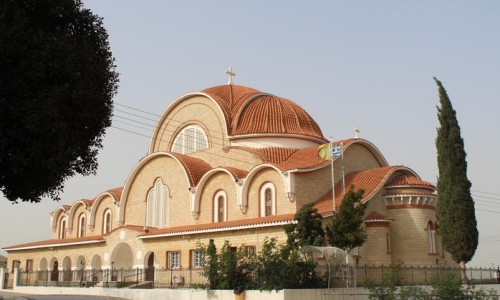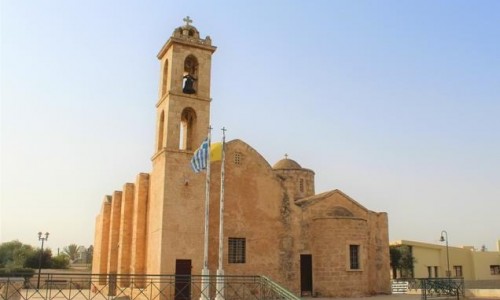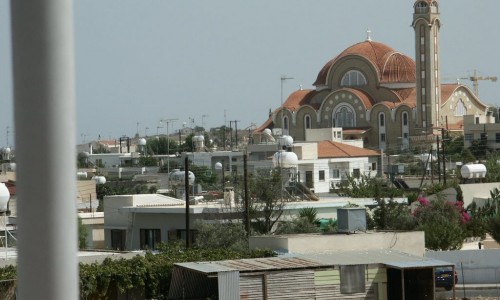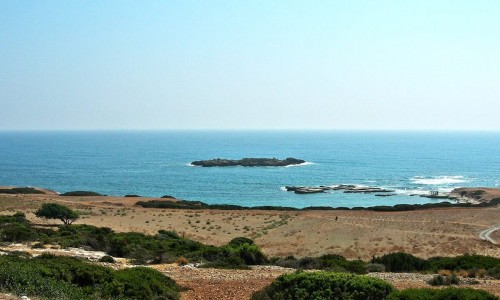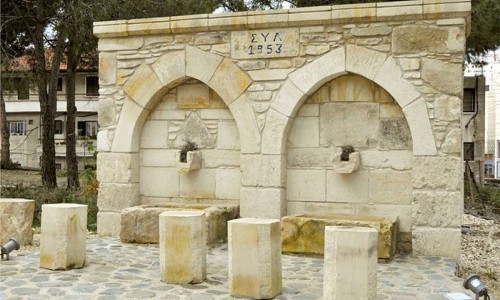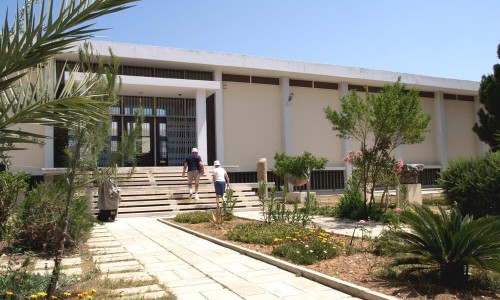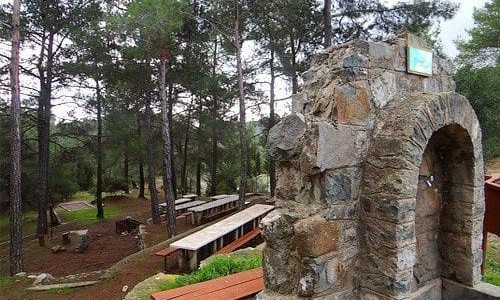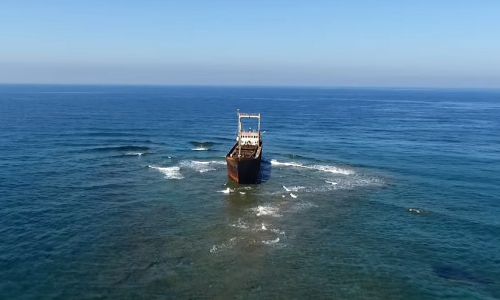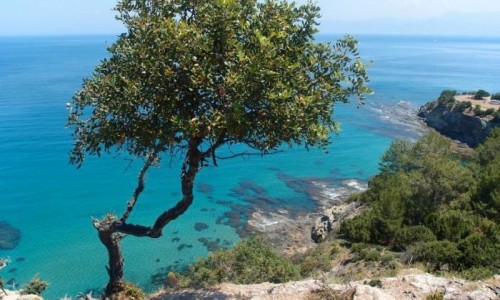Kennedy Square ( Paphos )
In the center of Paphos Old Town—locally known as Ktima—lies Kennedy Square, a wide, open space that feels like both a crossroads and a gathering place. While not as picturesque as a Venetian harbor or as ancient as the mosaics down in Kato Paphos, Kennedy Square is something else entirely: it’s the civic heart of the town, a democratic stage where daily life unfolds in all its Cypriot complexity.
Part administrative center, part social space, and part historical landmark, Kennedy Square is not just a place you pass through—it’s a place where people stop, linger, and participate in the evolving story of Paphos.
A Square Named for a Symbol
The square takes its name from John F. Kennedy, the 35th President of the United States, reflecting Cyprus’s Cold War-era admiration for Western ideals of democracy, progress, and leadership. The name was adopted during a time when Cyprus, newly independent from British rule (1960), was carving out its modern identity. Naming the square after Kennedy—young, modern, and symbolic of hope—made a statement.
But the square’s roots go much deeper than the 1960s.
A Historical Crossroads
Kennedy Square sits at the geographical and symbolic center of Ktima, surrounded by buildings that reflect over a century of civic life:
- The Old Town Hall, with its classic neoclassical columns and wide steps, has been the backdrop for everything from weddings to protests.
- The District Courthouse and nearby government offices made the square the administrative core of colonial-era Paphos under British rule.
- Nearby, historic coffee houses and men's clubs once buzzed with political debate, philosophical banter, and intense games of tavli (backgammon).
For much of the 20th century, Kennedy Square was where farmers came to settle land disputes, traders came to get licenses, and young couples took their wedding portraits. It was the civic front porch of Paphos.
Urban Renewal and Cultural Rebirth
By the late 1990s, the square—like much of Ktima—had faded into relative obscurity. As tourist development shifted toward the coast, Kennedy Square saw fewer visitors and started to feel neglected.
That began to change in the early 2010s, culminating in the Paphos 2017 European Capital of Culture initiative. As part of this major revitalization effort, Kennedy Square underwent a comprehensive redesign:
- The central space was opened up and paved with limestone tiles, offering a modern yet understated aesthetic.
- New benches, trees, lighting, and water features were added.
- Surrounding buildings were renovated, blending neoclassical facades with sleek new cafes and cultural spaces.
What emerged was not just a beautified space, but a reinvigorated civic plaza—a place that encourages interaction, performance, and reflection.
The Pulse of Public Life
Today, Kennedy Square is once again the social heart of Ktima. It serves multiple functions throughout the day:
- In the morning, it’s a calm spot where locals grab coffee or browse the nearby shops and bookstores.
- At midday, workers spill out of nearby offices and banks for lunch breaks under the trees.
- In the evening, families, teenagers, and tourists fill the space, especially during festivals or open-air performances.
Street musicians often perform in the corners. Kids ride scooters across the wide flat stones. Retirees gather on benches to share gossip or argue about football. It’s a living square, not a frozen monument.
Events, Culture, and Street Life
Kennedy Square plays host to a wide range of community events and municipal celebrations, especially during:
- Carnival season, when costumed parades and dance troupes pass through.
- Christmas and Easter, when the square is decorated with lights, seasonal markets, and religious music.
- Public demonstrations and civic ceremonies, continuing its legacy as a democratic gathering point.
In summer, you might stumble upon film screenings, pop-up art exhibitions, or improvised concerts. There's an openness to the space—physically and socially—that invites participation rather than just passive viewing.
Architecture and Atmosphere
What makes Kennedy Square stand out isn’t just its open design—it’s the way it’s framed by architectural contrasts:
- On one side: the neoclassical Old Town Hall, stately and symmetrical.
- On another: modern cafes with glass-fronted terraces, buzzing with students and remote workers.
- Nearby: alleyways that snake off into historic neighborhoods, filled with stone houses, artisan studios, and tiny churches.
The result is a place that feels like a hinge between old and new. You can sip a freddo espresso beneath a 100-year-old balcony while checking directions to a digital art show just a block away.
Food, Drink, and People-Watching
Kennedy Square is also one of the best places in Paphos for people-watching and casual dining. Around its edges, you’ll find:
- Coffee shops ranging from old-school Cypriot kafeneia to sleek, modern espresso bars.
- Bakeries and snack spots selling bourekia, koulouri, and other local treats.
- Meze restaurants and wine bars just a short walk away in the backstreets.
Grab a drink, find a seat under a tree, and just let the life of the town move around you.
Kennedy Square in Context: Not a Tourist Gimmick
What’s notable about Kennedy Square is that, despite the recent upgrades, it hasn’t been over-commercialized. It remains a space used by locals, not just designed for tourists. You won’t find souvenir stalls or chain restaurants dominating the space. Instead, it retains an unforced authenticity, shaped by the routines and rituals of everyday life in Paphos.
The Soul of a Town in a Public Square
Kennedy Square may not have ancient ruins or medieval fortresses, but it offers something equally important: a living expression of modern Cypriot life. It reflects Paphos’s journey—from colonial outpost to sleepy town to European Capital of Culture and beyond.
It’s a place of ritual and rhythm, where weddings and protests, politics and poetry, children’s games and civic announcements all unfold on the same stone ground.
In a world of over-curated travel experiences, Kennedy Square is refreshingly real. Come without an itinerary. Sit. Watch. Listen. Let it reveal itself.
Visitor Info and Tips
- Location: Central Paphos Old Town (Ktima), near the Town Hall and main post office.
- Best Time to Visit: Late afternoon to early evening, when the light softens and the square comes alive.
- Don’t Miss: A coffee at a local kafeneio, where time slows down and the conversation is always flowing.
- Nearby: Shops, bookstores, art galleries, and the municipal market are just steps away.
- Combine With: A walking tour through Mousalla Square, the Ottoman baths, and Makarios Avenue.


